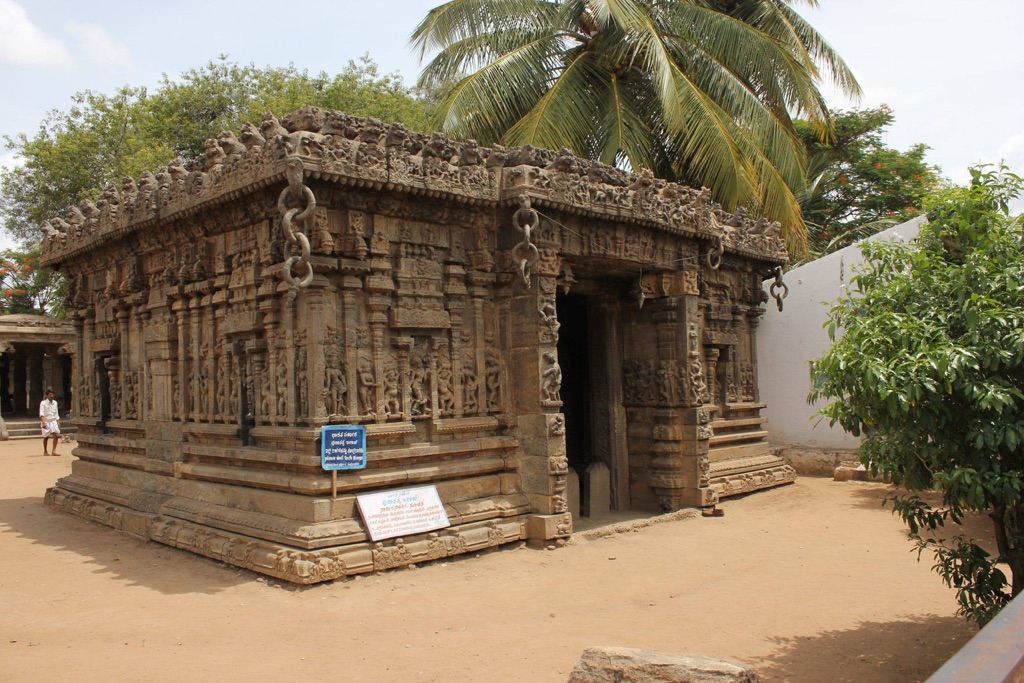Summary
The Gaurishvara Temple, a beacon of Dravidian architecture, is nestled in the heart of Yelandur, Karnataka, India. Dedicated to Lord Shiva, this historical marvel was built by a chieftain under the Vijayanagara Empire in the 16th century. Its distinctive features include intricately carved reliefs, a towering entrance, and a uniquely designed sanctum. The temple, a testament to the rich cultural heritage of the region, continues to draw history enthusiasts and spiritual seekers alike.
Get your dose of History via Email

Historical Background of The Gaurishvara Temple
The Gaurishvara Temple was built during the reign of the Vijayanagara Empire, specifically by a local chieftain named Chikka Thimmarasa in the 16th century. This period was known for its patronage of art and architecture, and the temple stands as a testament to this.
Chikka Thimmarasa, an ardent devotee of Lord Shiva, commissioned the temple’s construction to express his devotion. He was a prominent figure in the region, known for his administrative acumen and dedication to cultural development.
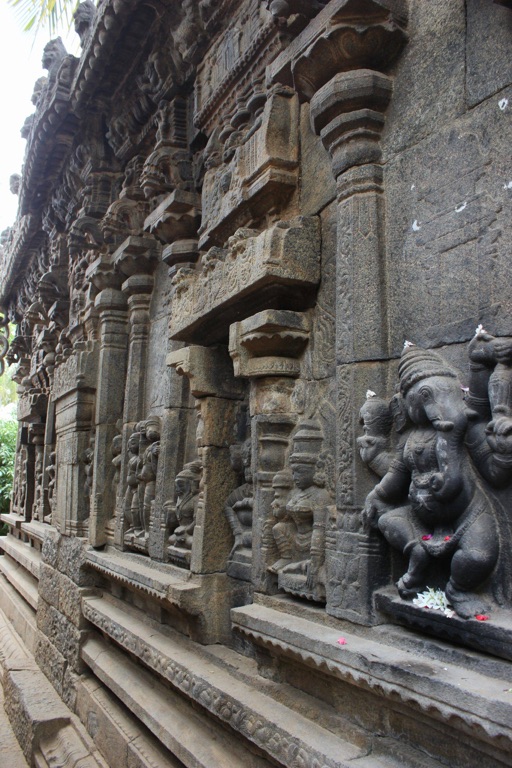
The temple has weathered the sands of time, standing firm through various historical upheavals. It continues to serve as a spiritual hub for the local populace, hosting several annual festivals that draw crowds from near and far.
Interestingly, the temple also features inscriptions in old Kannada script. These inscriptions provide valuable insights into the socio-political dynamics of the era, making the temple a significant resource for historians and researchers.
Over the years, the temple has undergone several restorations to preserve its original grandeur. Despite these changes, the essence of the temple, its historical significance, and its architectural brilliance remain untouched.
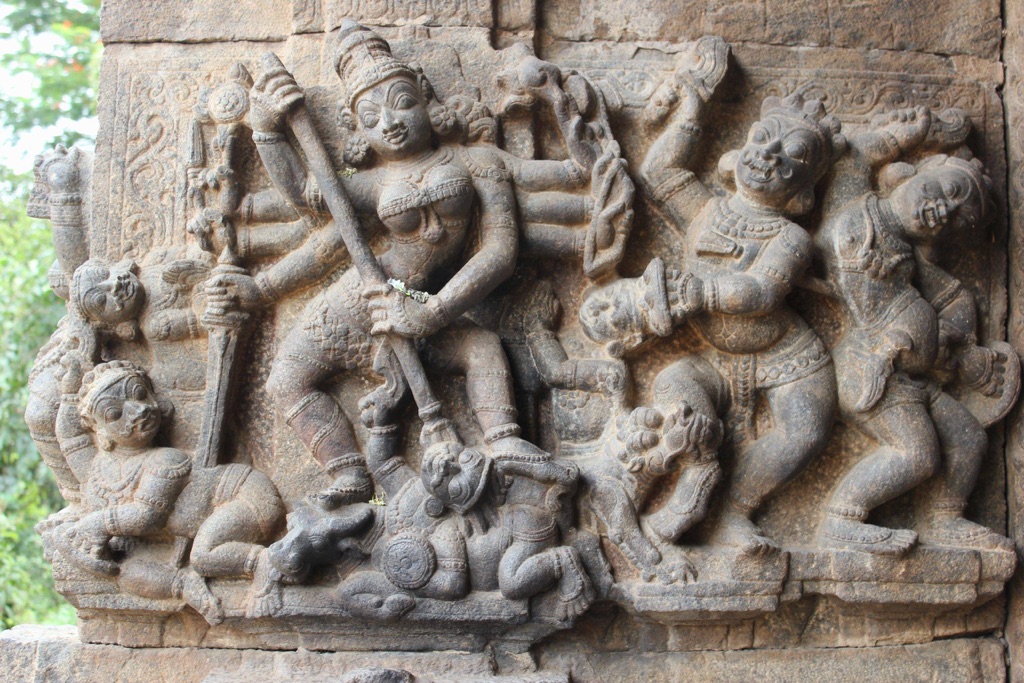
Architectural Highlights/About the Artifact
The Gaurishvara Temple is a stellar example of Dravidian architecture. Its layout follows the typical style of a Vijayanagara temple, with a garbhagriha (sanctum sanctorum), an antarala (vestibule), a navaranga (hall), and a mukhamantapa (entrance hall).
The temple’s exterior is adorned with intricate carvings depicting various Hindu deities, scenes from Hindu epics, and floral motifs. The craftsmanship displayed in these carvings is a testament to the skill and creativity of the artisans of the era.
The sanctum houses a Shiva linga, the symbolic representation of Lord Shiva. The linga is believed to be svayambhu (self-manifested), adding to the temple’s spiritual significance.
The temple’s towering entrance, or gopuram, is another architectural highlight. It is decorated with elaborate carvings and topped with a kalasha (pot-like structure), typical of Dravidian architecture.
The temple complex also includes a large Nandi (bull), the vehicle of Lord Shiva, situated in a separate pavilion. This Nandi is carved out of a single stone and is one of the largest in Karnataka.
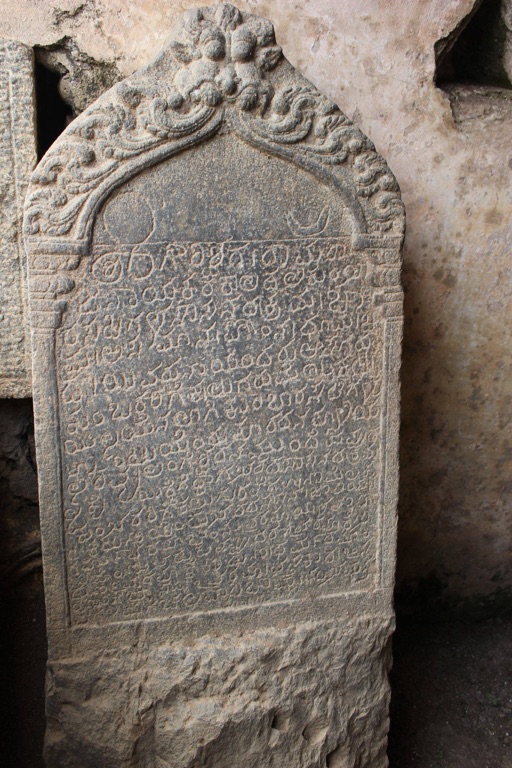
Theories and Interpretations
There are several theories and interpretations associated with the Gaurishvara Temple. Some believe that the temple’s construction was influenced by the political stability provided by the Vijayanagara Empire, allowing for the flourishing of art and architecture.
Others interpret the temple’s intricate carvings as a reflection of the socio-religious beliefs of the era. The depictions of various deities and scenes from Hindu epics suggest a syncretic culture where different faiths coexisted.
The presence of the large Nandi sculpture has led some to theorize that the temple might have been a prominent center for the worship of Nandi. This theory is supported by the fact that Nandi plays a significant role in Shaivism, the sect to which the temple’s patron, Chikka Thimmarasa, belonged.
Another interpretation revolves around the temple’s inscriptions. These inscriptions are thought to provide valuable insights into the administrative practices and socio-political dynamics of the Vijayanagara period.
Finally, some theories suggest that the temple’s unique architectural style might have been influenced by the personal tastes and preferences of its patron, Chikka Thimmarasa.
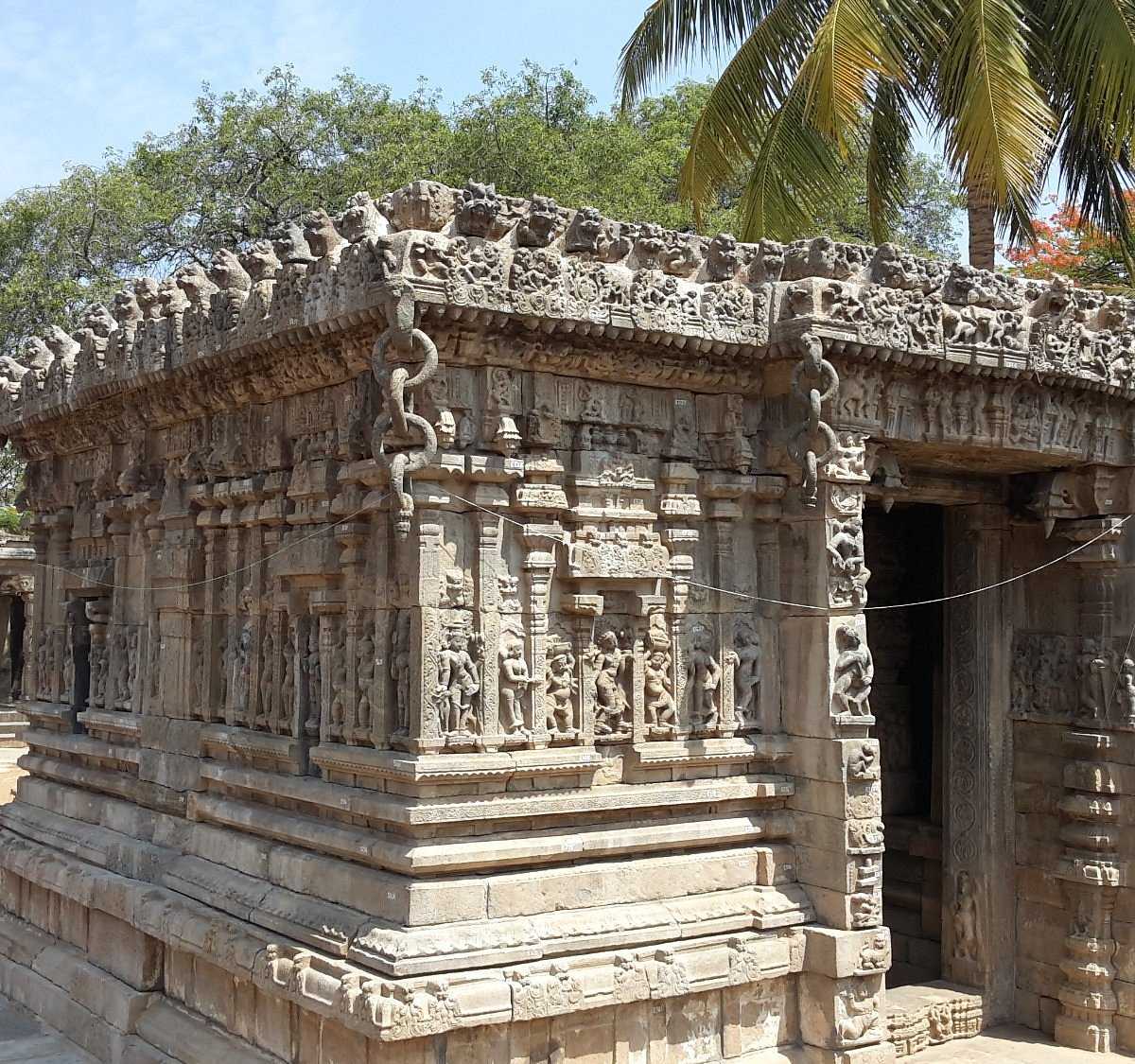
Good to know/Additional Information
The Gaurishvara Temple is open to visitors throughout the year. However, the best time to visit is during the annual temple festival, when the temple is beautifully decorated and a variety of cultural events are organized.
The temple is easily accessible by road from major cities in Karnataka. It is advisable to hire a local guide to better understand the temple’s history and architecture.
Photography is allowed in the temple, making it a great spot for history enthusiasts and photography lovers. However, visitors are expected to respect the sanctity of the place and follow the rules set by the temple authorities.
While in Yelandur, visitors can also explore other historical sites, such as the Chennakesava Temple and the Someshwara Temple, both of which offer unique insights into the region’s rich cultural heritage.
Lastly, visitors are advised to dress modestly while visiting the temple, keeping in line with the local customs and traditions.
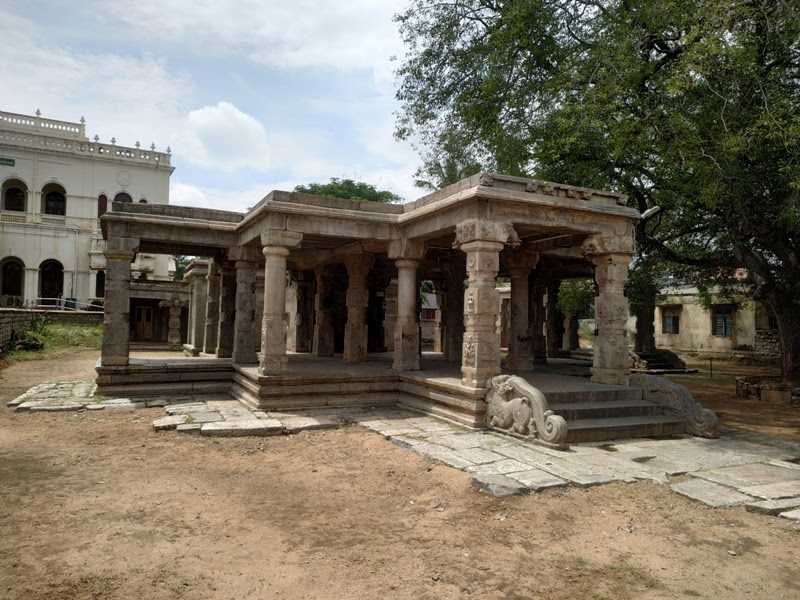
Conclusion and Sources
The Gaurishvara Temple is a significant historical and architectural landmark that offers a glimpse into the rich cultural heritage of the Vijayanagara period. Its intricate carvings, unique layout, and historical significance make it a must-visit for history buffs, spiritual seekers, and architecture enthusiasts.
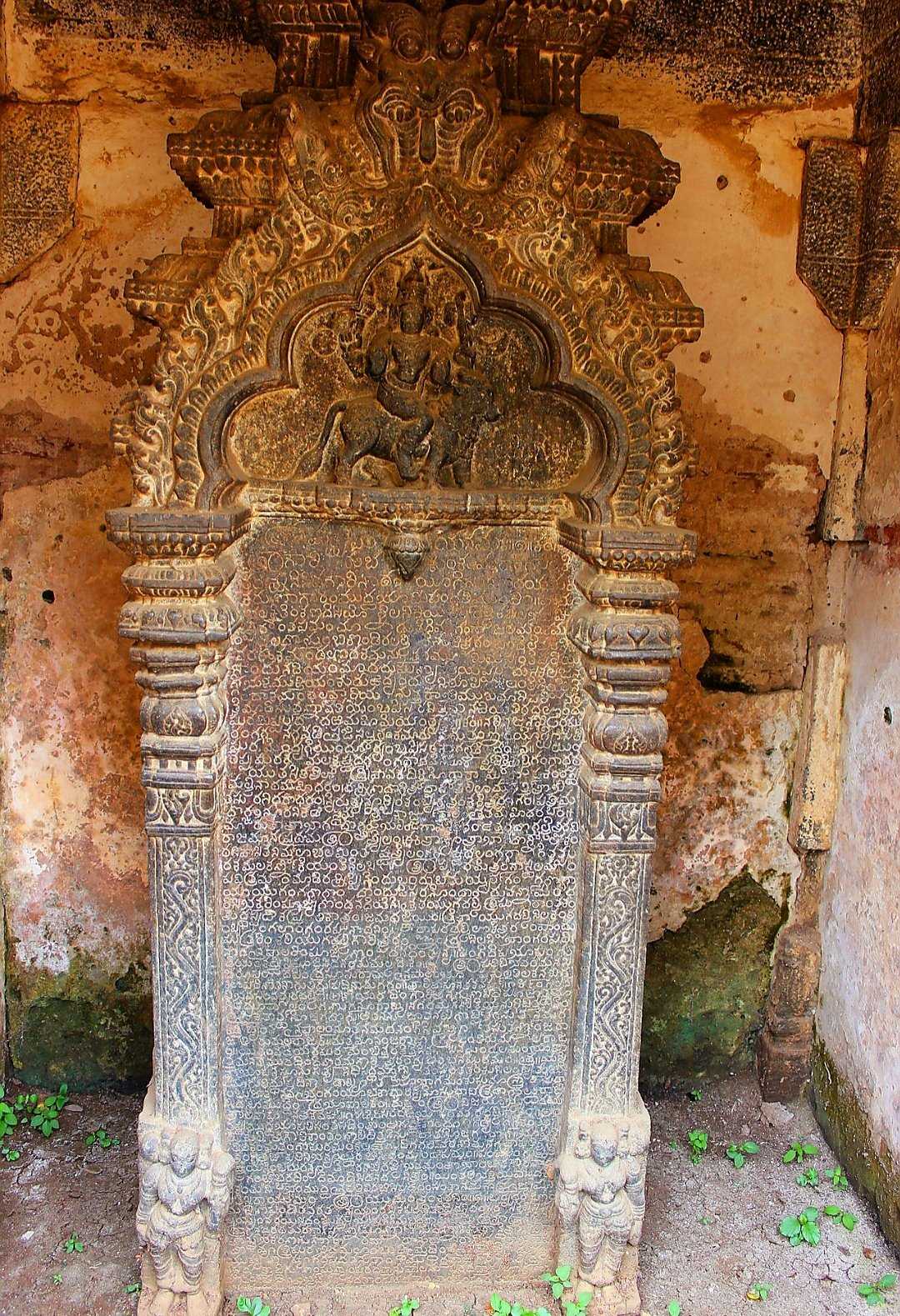
For further reading and to validate the information provided, please refer to the following sources:

